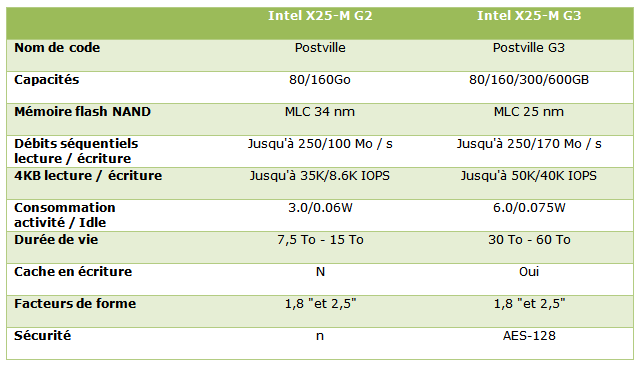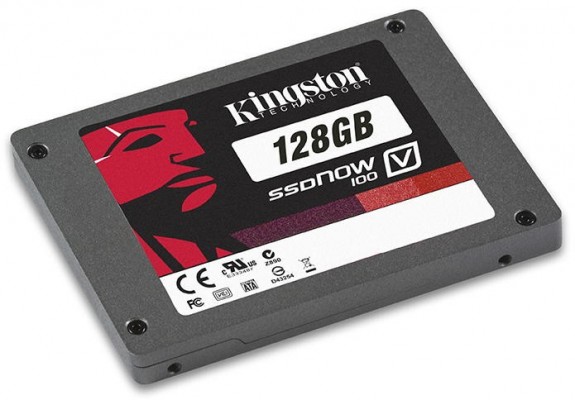Our DSS is still alive, and we wrote more than 400 TB (415 TB on the morning of March 14). As a reminder, we conduct a small experiment since December 20, 2010: write loop on a DSS to know what happens when the cells reach their limits. For testing, we write to sequential files of 1 GB, played on a Velociraptor.
DSS test is a Falcon in G. Skill, a model-based controllers and memory Indilinx Samsung 43 nm. MLC memory of this model is theoretically capable of 10,000 write cycles, while newer models use either the memory or 3x nm memory in 25 nm, respectively, which are limited to 5000 and 3000 cycles.
Our SSD, after nearly three months, rose from an average of 1760 wear cycles - it had been used 18 months as a system disk - to an average wear of 6511 cycles. Most cell sweat, according to the SMART information, was written after 7727, while the less sweat was written after 1012. We'll obviously keep abreast of the progress of the review on our Twitter account (@ tomshardware_fr) and other news.
Today we'll look at the resistance according to the manufacturers of SSDs, taking the example of the latest models of Micron, the C400. Crucial should propose this model fairly quickly as the M4. In its literature, indicates that Micron C400v, 64 GB, is expected to receive 36 TB of data, while the C400 Classic - 128, 256 and 512 GB - $ 72 TB values \u200b\u200brather low, especially when we notice that the DSS has exceeded 415 TB There is a reason we write files sequentially from 1 GB Micron said that while tests are carried out with different file sizes: 5% 4 KB files, 5% 8 kb, 10 kb of 16%, 10% of 32 kb, 35 kb of 64% and 35% of 128 kb.
Moreover, the values \u200b\u200bare indicative announced: Micron gives a value of 72 To whatever capacity SSD, while the wear of a DSS depends on its ability: if you write 72 To a 128 GB SSD , the average wear will be higher than a 256 GB SSD that would have written the same data. In the end, we are still waiting for our SSD reaches the 10 000 entries to check visually the behavior of the DSS.
Data loss? Clerical errors? Capacity which decreases progressively from cell death? We should know within a few weeks. 


DSS test is a Falcon in G. Skill, a model-based controllers and memory Indilinx Samsung 43 nm. MLC memory of this model is theoretically capable of 10,000 write cycles, while newer models use either the memory or 3x nm memory in 25 nm, respectively, which are limited to 5000 and 3000 cycles.
Our SSD, after nearly three months, rose from an average of 1760 wear cycles - it had been used 18 months as a system disk - to an average wear of 6511 cycles. Most cell sweat, according to the SMART information, was written after 7727, while the less sweat was written after 1012. We'll obviously keep abreast of the progress of the review on our Twitter account (@ tomshardware_fr) and other news.
Today we'll look at the resistance according to the manufacturers of SSDs, taking the example of the latest models of Micron, the C400. Crucial should propose this model fairly quickly as the M4. In its literature, indicates that Micron C400v, 64 GB, is expected to receive 36 TB of data, while the C400 Classic - 128, 256 and 512 GB - $ 72 TB values \u200b\u200brather low, especially when we notice that the DSS has exceeded 415 TB There is a reason we write files sequentially from 1 GB Micron said that while tests are carried out with different file sizes: 5% 4 KB files, 5% 8 kb, 10 kb of 16%, 10% of 32 kb, 35 kb of 64% and 35% of 128 kb.
Moreover, the values \u200b\u200bare indicative announced: Micron gives a value of 72 To whatever capacity SSD, while the wear of a DSS depends on its ability: if you write 72 To a 128 GB SSD , the average wear will be higher than a 256 GB SSD that would have written the same data. In the end, we are still waiting for our SSD reaches the 10 000 entries to check visually the behavior of the DSS.
Data loss? Clerical errors? Capacity which decreases progressively from cell death? We should know within a few weeks.



No comments:
Post a Comment